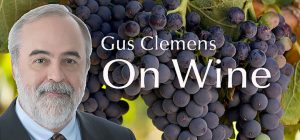Alcohol makes wine wine. Take away yeast converting sugar into alcohol, you have grape juice. Nothing wrong with grape juice, but no sage asserts “in grape juice there is truth.”
Still, alcohol levels in wine engender controversy. As in religion and politics, the big brouhaha rages over small differences.
What is proper amount of alcohol? Does an alcohol by volume (ABV) score of 15.5% make for a perfect pour, or for shameful excess? Gastronomes assert ABV of 12% is ideal for food pairing. Others whine that’s “wimp wine”.
To add to the debate, ABV numbers on the label—precise to a tenth of a percent—are only guesses. If the label lists ABV of 14% or lower, winery only has to be accurate within 1.5% as long as it does not exceed 14%. So etherial 12.5% pinot noir legally could be 14%. Or it could be 11%
When score is more than 14% ABV, the allowed margin for error is 1%. That means a 15.5% ABV Napa cab—a common number—could be a shocking, outrageous 16.5%. Or an almost admirable 14.5%.
The proof of the proof is not on the label. It is in the mouth, especially on the finish, where “hot” exposes itself.
Of course, wine being wine, it is not that simple. Rich ripe grapes—which boost alcohol—can mask alcohol with their smarmy phenolic illusion of sweetness. You can have a high alcohol wine that tastes less alcoholic than a lower alcohol wine.
Pretty much across the board, wine has higher alcohol today. Two reasons. The market did its part: as wine became a “cocktail hour” drink, buzz factor became more important. Nature did its part: climate change means virtually every vineyard is warmer, warmer means more ripeness, riper grapes mean more sugar, more sugar means higher alcohol.
Bottom line: lower alcohol wines are better with food, higher alcohol wines fit zeitgeist. Expounders from both camps can argue away, hopefully over glasses of their particular favorite. Peace, fellow wine drinkers. Peace.
Tasting notes:
• Ruggeri Argeo Prosecco DOC Treviso NV: crisp, simple, delicate sparkler; clean flavors. $16 Link to my review
• Éric Texier Brézème Roussanne 2017: Natural wine, deep gold color, touch of amber from time on skins. $26-30 Link to my review
• Long Meadow Ranch Pinot Noir Anderson Valley 2016: Smooth, generous in the mouth; built for food pairing. $37-42 Link to my review
Last round: Pair of jumper cables walk into wine bar. Bartender: “OK, I’ll serve you, but don’t start anything.”

